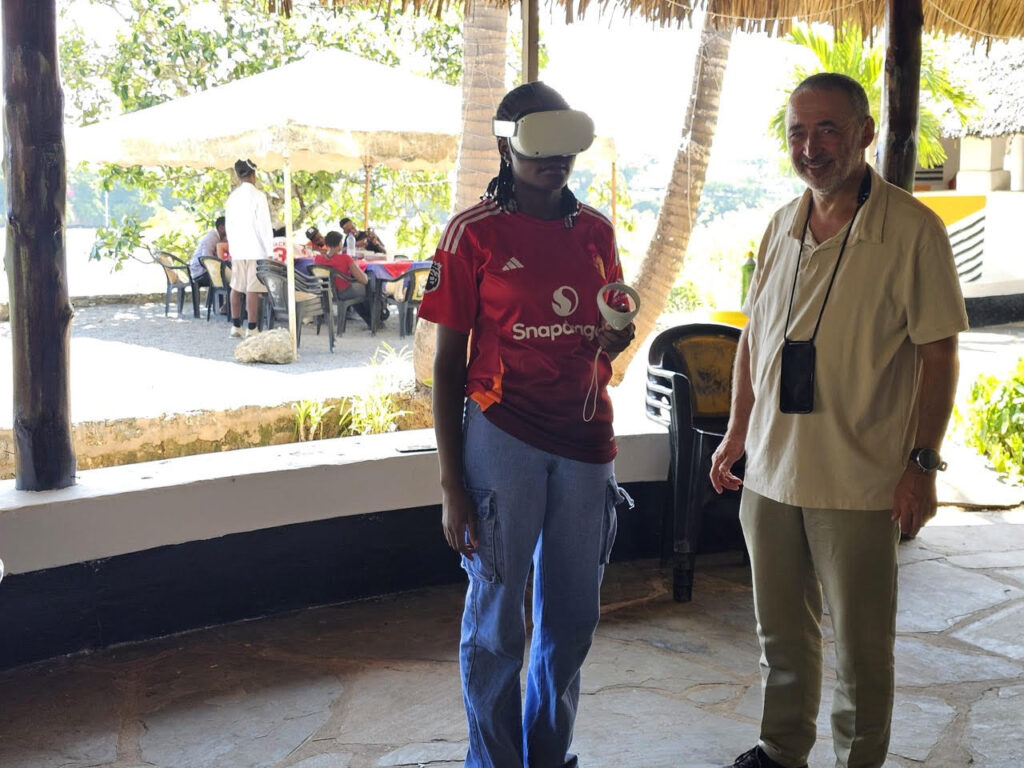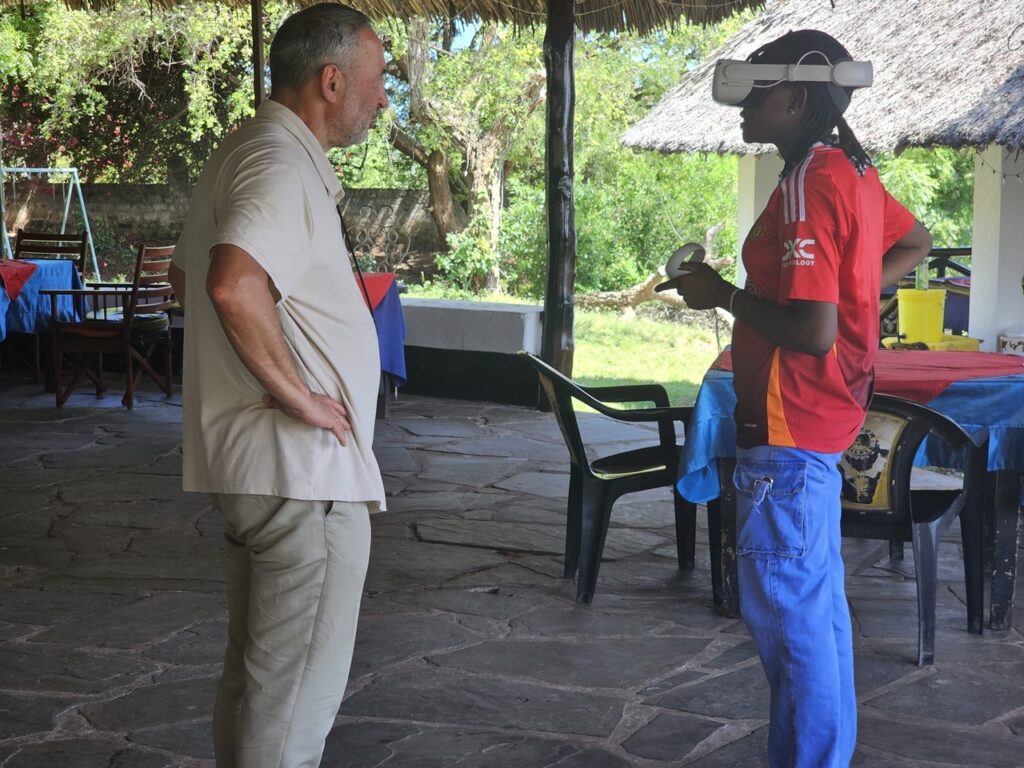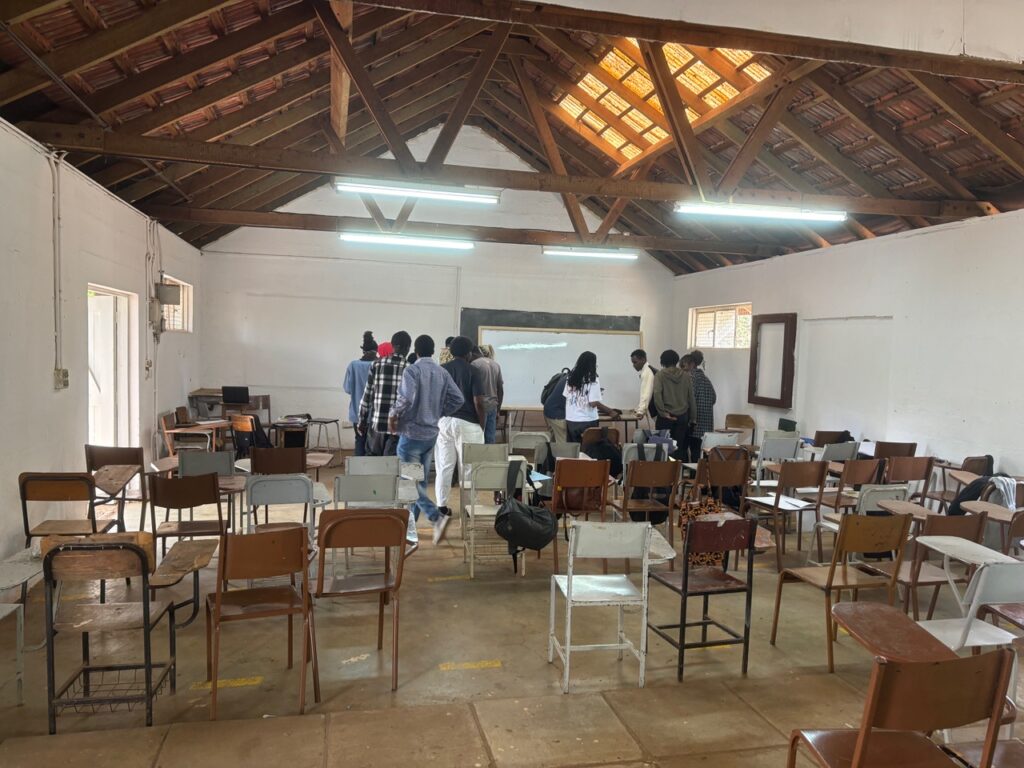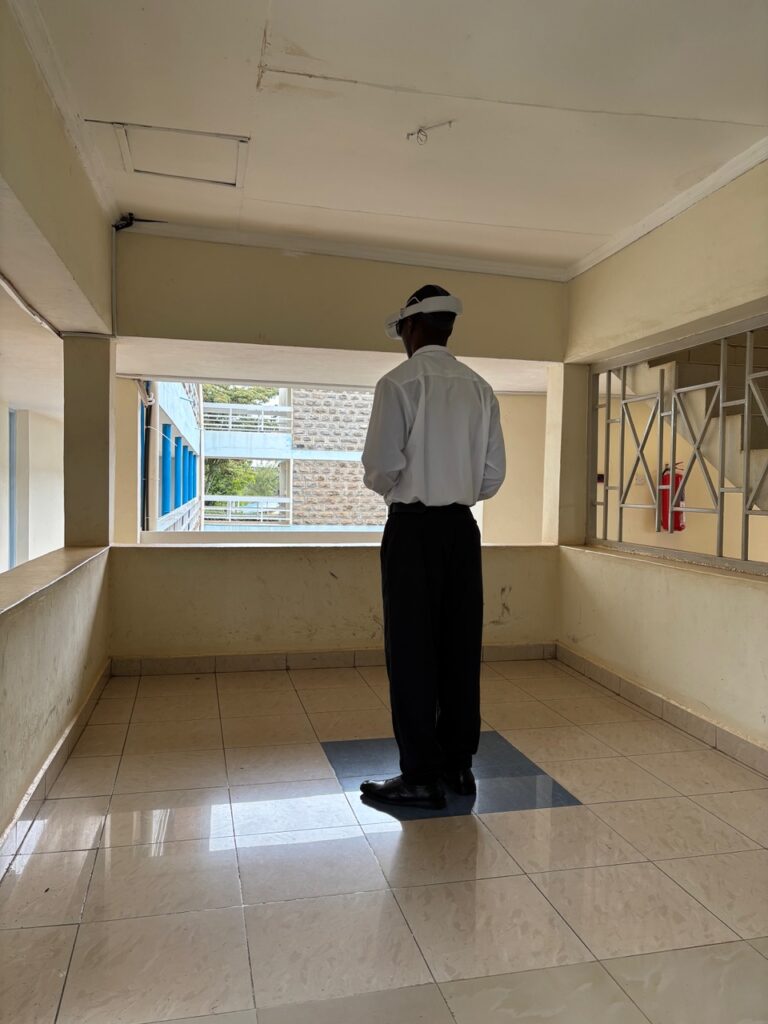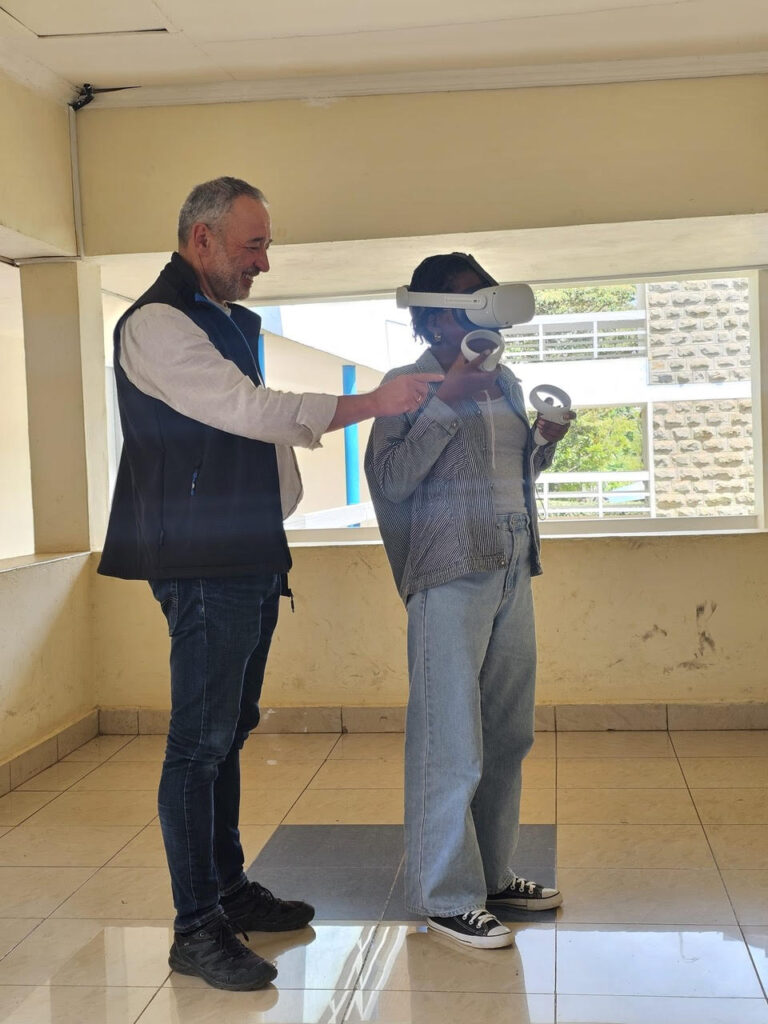The research mobility of the Polish Society for Aesthetics to Kenya in the fall of 2024 gave a possibility for Prof. Przemyslaw Kisiel to conduct a part of an empirical investigation on the use of hybrid environments and VR and AR technologies for the presentation and reception of art in museum settings aiming at identifying of the most advanced ways of implementing the hybrid environment and using VR and AR technologies in museum spaces.
This investigation was made possible by the great commitment and support of Dr. Anne Mwiti from Kenyatta University who – for the purpose of these research activities – made available her original works from “The Nkrombe Series”. She also prepared and presented, during the implementation of the study, the author’s commentary on the used works. The second person essential for the implementation of the study was Dr. Bogna Gladden-Obidzińska, who provided the space of the virtual KONKRET AR.T Gallery, in which “The Nkrombe Series” is presented in a virtual form. Also, Dr. Kamau Wango, Chairman of the Fine Art and Design Department of Kenyatta University, was of immense support and accepted the request for permission to carry out the research among students in this Department.
The full process of carrying out the research consisted of two stages.
In the first stage, the artworks of Dr. Anne Mwiti were presented to the students in material form. The necessary introduction to the subject matter of the presented works was prepared by Dr. Anne Mwiti. After viewing all the works, the students were asked to complete a questionnaire on the process of reception and evaluation of the viewed artworks.
In the second stage of the research, students were invited into the virtual KONKRET AR.T Gallery (using VR headsets). After this visit, the students were asked to complete a second questionnaire describing the reception process of the exhibition viewed and the perceived differences between the reception of art in its material and virtual form. 28 students took part in the first stage, while 13 participated in the second stage
Empirical research was also conducted among students at Pwani University in Kilifi. In the case of this group of students, the study was carried out to a limited extent and only involved a visit to the virtual KONKRET AR.T Gallery (using VR headsets) followed by participation in a questionnaire describing the process of reception of the exhibition viewed and the perceived differences between the reception of art in its ‘’material form and virtual form. This part of the survey involved 7 students out of the 8 who completed a gallery walk.
The empirical data obtained in the research looks promising, although its full value will be judged after an in-depth analysis of it.
